Ayodhya, a land steeped in mythology and spirituality, is a destination of profound historical significance. Revered as the domain of Lord Rama, this sacred city echoes his name, signifying his eternal reign as held by belief and legends.
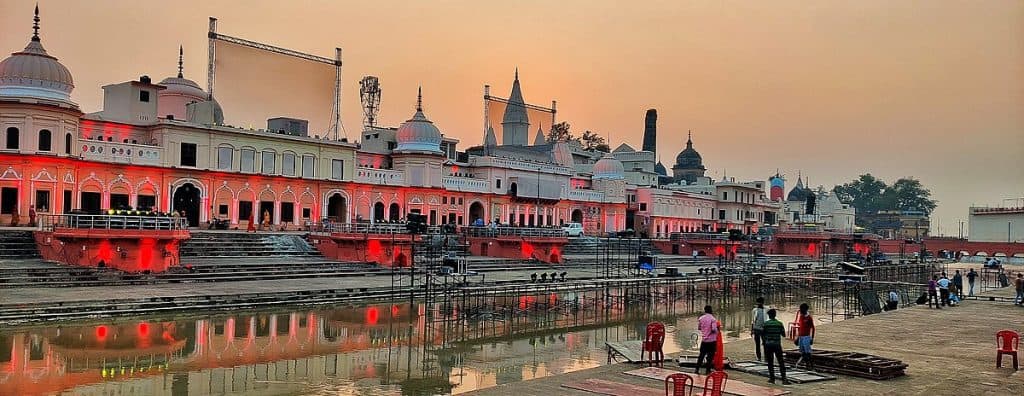
From the epoch of Rama’s birth in the Treta Yuga to the recent restoration of the Rama Temple, Ayodhya has witnessed many historical transformations, yet the faith of its people remains unshaken.
For travellers seeking a journey of spiritual awakening, a visit to “Ram Nagri” is essential. The city offers a unique opportunity to immerse oneself in a blend of spirituality and myth, rejuvenating both the soul and mind through its significant sites.
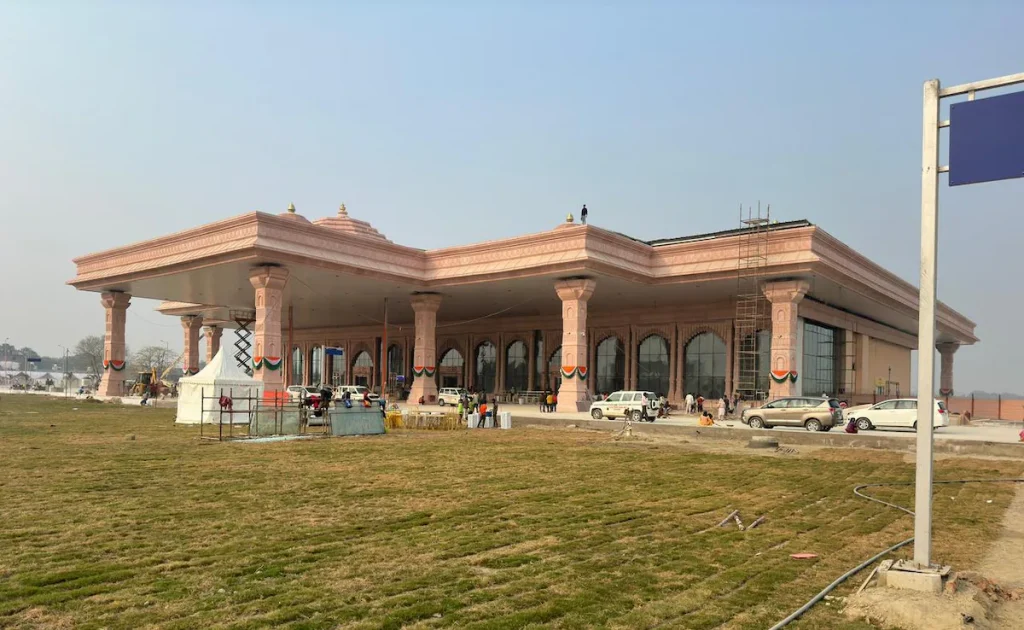
Travellers planning a spiritual rejuvenation trip to “Ram Nagri, Ayodhya” must visit pilgrim sites of historical significance and experience a spiritual and mythological escape.
Ram Janam Bhumi:
The term “Ram Janmabhoomi” translates directly to “the birthplace of Lord Ram.” According to Hindu belief, Lord Ram, the seventh incarnation of Lord Vishnu, spent his early years in the vicinity of the Sarayu River, as narrated in the ancient Indian epic, the Ramayana. Devotees of the Hindu faith hold Ram Janmabhoomi in the highest reverence, considering it a premier destination to visit.
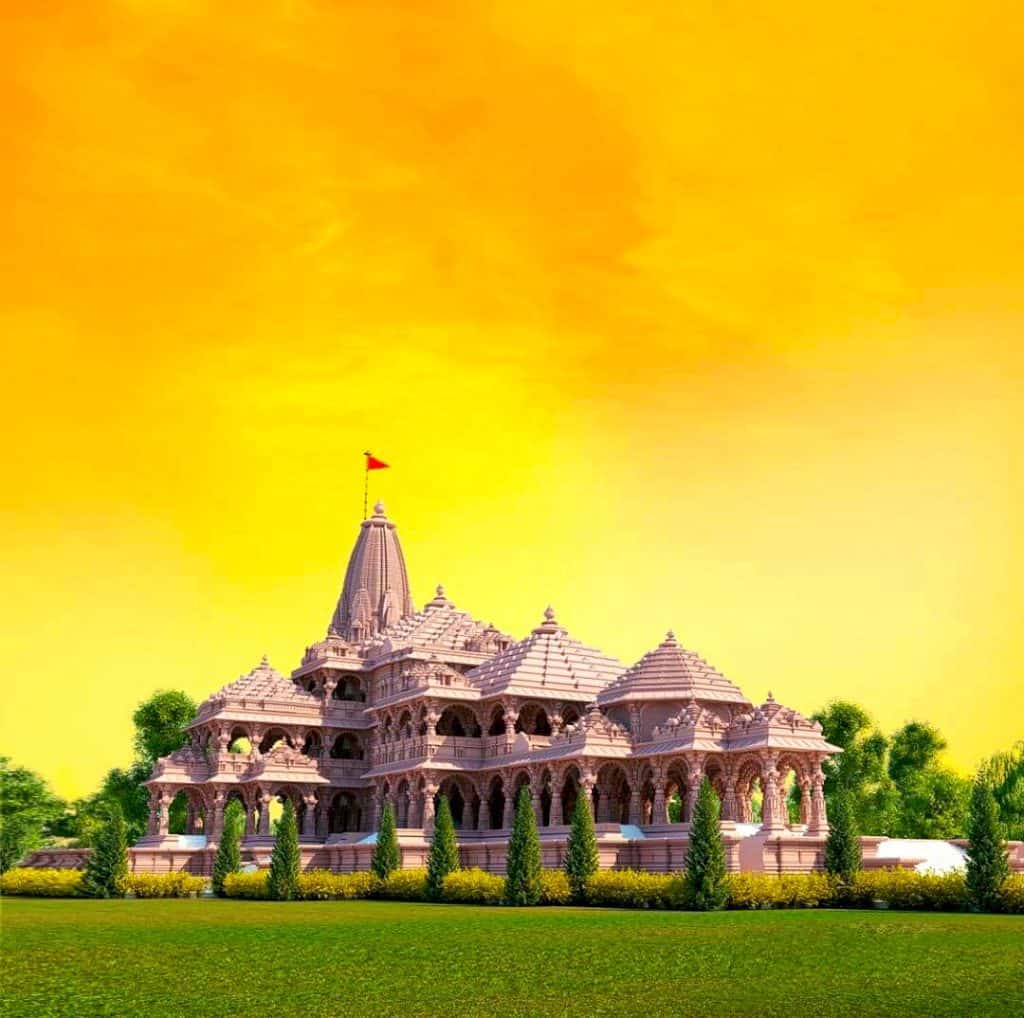
This sacred site holds a prominent position as one of the seven most significant pilgrimage destinations for Hindus, and it is an integral part of the Ayodhya Darshan itinerary.
Kanak Bhawan:
This renowned temple, situated near Rama Janam Bhumi, the birthplace of Lord Rama, stands as a testament to a legendary tale. According to the folklore, this palace, known as Bhawan, was bestowed upon “Sita” as a wedding gift by Kaikayi when she married “Rama.” Not only is this temple rich in historical significance, but it also showcases exquisite architectural and design craftsmanship, making it the most captivating structure. It is worth noting that this temple is a private abode for Devi Sita and Lord Rama.
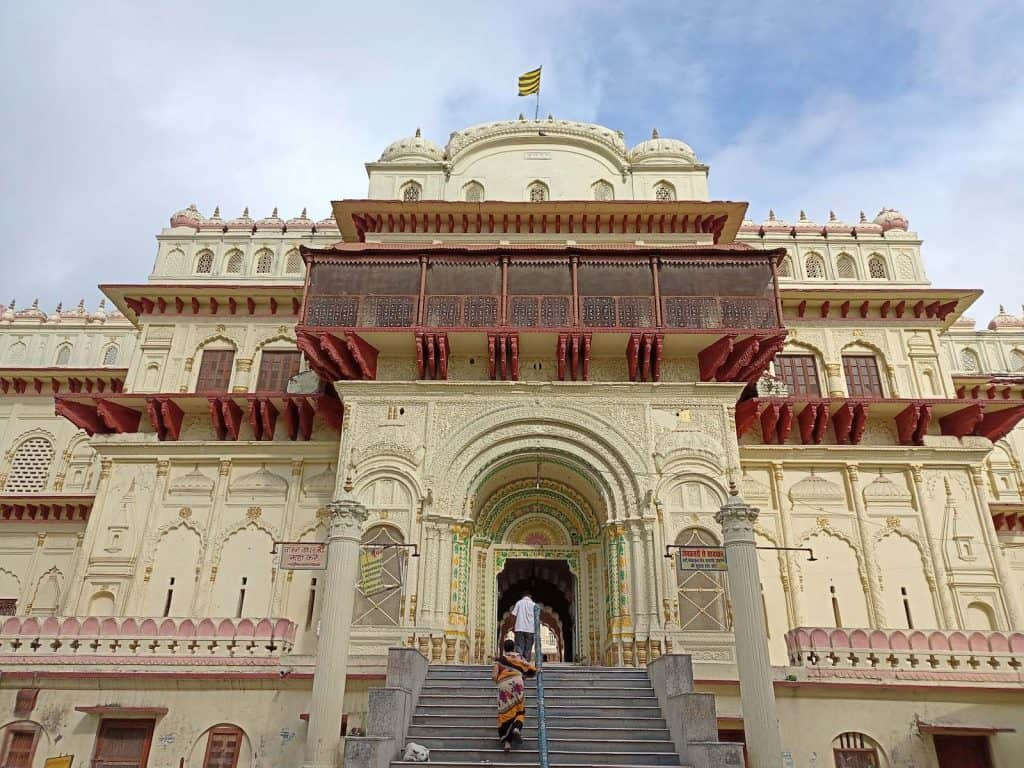
With its splendid Bundelkhand architectural style, this temple is a true masterpiece and the sacred township’s crowning jewel. The meticulous reconstruction of this structure, under the patronage of King Vikramaditya, has transformed it into an even more breathtaking marvel, drawing visitors from far and wide.
Hanuman Garhi:
Situated a mere 1km from the railway station, the Hanuman Garhi temple holds a significant place in the township’s history and mythology. This temple, attributed to the reign of King Vikramaditya, carries profound historical and religious importance.
It is widely believed that Hanuman, the devoted servant of Lord Rama, resides here, serving as the guardian of Ayodhya and upholding the ideals of Rama Rajya, the rule of Lord Rama.
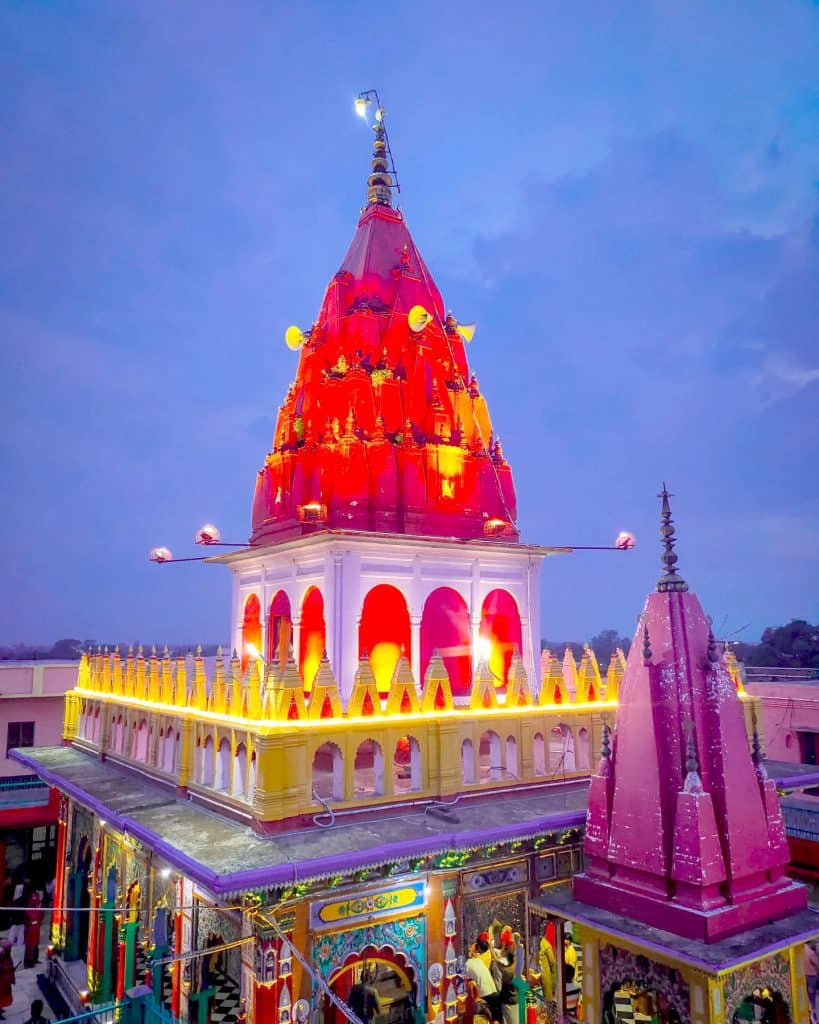
The primary deity of this temple is Lord Hanuman, who is depicted seated on the lap of his mother, Anjana. The temple’s walls are adorned with inscriptions of the Hanuman Chalisa, providing visitors with a deep spiritual experience and a profound connection to the divine.
Ram Ki Paidi:
Ram ki Paidi comprises a series of riverfront ghats nestled along the banks of the tranquil River Saryu. This picturesque riverside setting comes alive, especially when illuminated at night, creating a breathtaking landscape. These ghats hold great spiritual significance, as they provide devotees with platforms to cleanse themselves of sins through a ritualistic dip in the river. Each day, a significant number of pilgrims flock to this site to partake in this sacred bathing ritual in the holy waters of the Saryu.
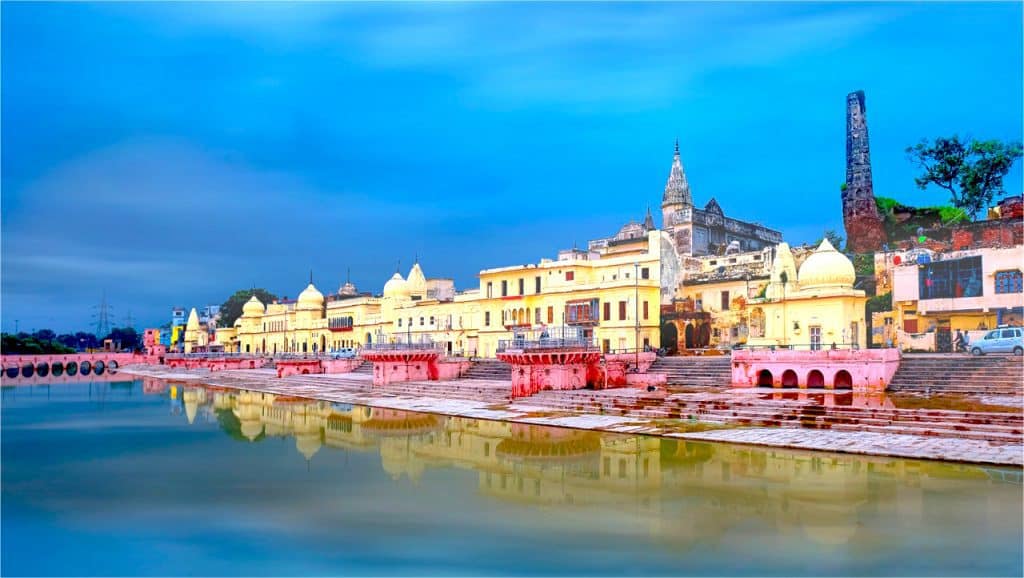
These ghats have a remarkable history, having been reconstructed after being submerged during periods of heavy rainfall and flooding. Their resilience stands as a testament to the unwavering faith and devotion of the pilgrims who frequent them.
One of the most captivating moments at Ram ki Paidi occurs during Diwali when the entire area is adorned with countless diyas (oil lamps). This dazzling spectacle symbolizes the triumphant return of Lord Rama, accompanied by his beloved wife Sita and devoted brother Lakshman, after their 14-year exile. The illuminated display not only marks a joyous celebration but also pays homage to the legendary homecoming of Lord Rama to his homeland, adding a spiritual dimension to the scenic beauty of Ram ki Paidi.
Sita Ki Rasoi:
The temple’s name, Rasoi, carries profound significance in itself. In Hindi, “Rasoi” translates to “Kitchen,” and according to mythological accounts, this temple holds the historical kitchen of Sita, where she prepared meals for her family.
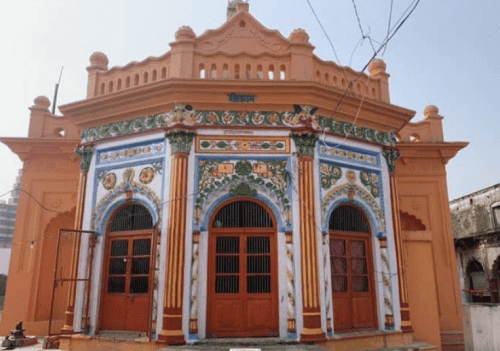
Within these hallowed walls, visitors can witness the depictions of Lord Rama alongside his three brothers – Lakshman, Bharat, and Shatrughan – accompanied by their respective spouses. This temple serves as a tangible embodiment of sacred and deeply spiritual beliefs deeply rooted in Hindu culture.
Raja Mandir:
Located at the banks of river Saryu in Guptar Ghar, Faizabad, Raja Mandir holds a special place in Hindu mythology. This temple is home to beautifully carved idols of various Hindu Gods and Goddesses, adorned with silk garments and intricate jewellery.
The temple’s stunning architecture showcases the mastery of Hindu design. While it was once closely linked to Lord Sri Ram, the ruler of Ayodhya, today it serves as a regular temple housing statues of many deities.
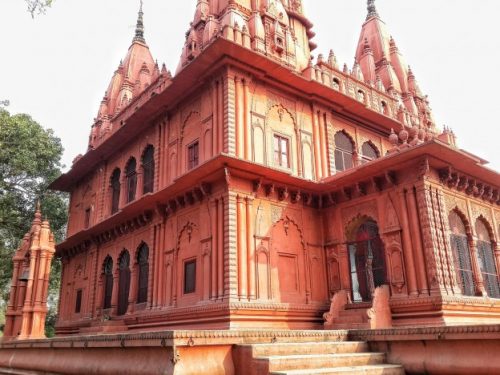
What makes Raja Mandir even more enchanting is its location right at the river’s edge, creating a captivating reflection of the temple in the water, a sight that truly delights the eyes.
Nageshwarnath Mandir:
The Nageshwarnath Temple has its roots in a fascinating legend associated with Kush, the son of Lord Rama. According to local tales, Kush once lost his armlet while bathing in the sacred waters of the Saryu River. This lost armlet was discovered by a Nag-Kanya, a serpent maiden, who immediately fell in love with Kush. In deep devotion to Lord Shiva, Kush built the Nageshwarnath Temple as an expression of his love and reverence for the Nag-Kanya. This beautiful tale of love and piety adds an enchanting layer to the temple’s history.
Throughout the ages, the Nageshwarnath Temple has remained a symbol of immense religious significance. Even during the reign of Vikramaditya, it remained in pristine condition, serving as a place of worship and veneration. In 1750, during the tenure of Safdar Jung’s minister, Naval Rai, the present temple structure was constructed, preserving the sanctity of the site. The temple showcases the timeless Nagara style of architecture, known for its harmonious fusion of aesthetics and spirituality.
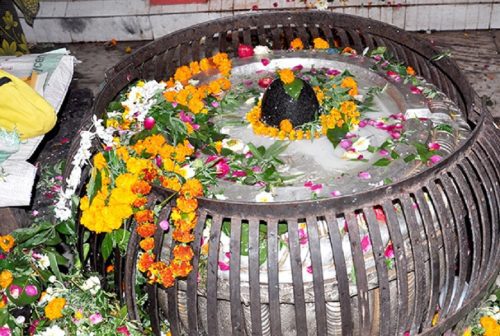
A particularly noteworthy time to visit the Nageshwarnath Temple is during the grand celebration of Shivratri. Its rich history, coupled with its architectural charm and the grand celebrations of Shivratri, make it a captivating destination for those seeking a deeper connection with spirituality and the legends that have shaped the sacred township’s cultural landscape.
Treta Ke Thakur:
The Treta Ke Thakur Temple is situated in the Naya Ghat locality. Within this temple, there are several idols, including depictions of Lord Ram, Laxman, Hanuman, Sita, Bharat, and Sugreev. It is said that these statues were meticulously carved from single blocks of black sandstone.
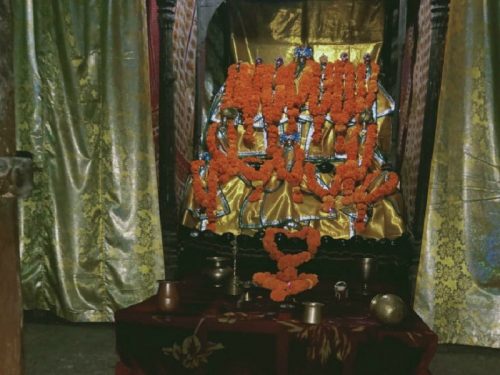
According to legend, this very spot is where Lord Ram conducted the renowned Ashwamedha Yagna on Earth, and the temple now stands on this sacred ground. In the 1700s, during the reign of Ahilyabai Holkar, the Maratha queen, the temple underwent significant renovations and enhancements, further adding to its historical significance.
Choti Chawni:
Choti Chawni, also known as Valmiki Bhawan or Maniramdas Chawni, is an impressive building made entirely of white marble. It’s such a stunning place that you really should visit it at least once in your lifetime.
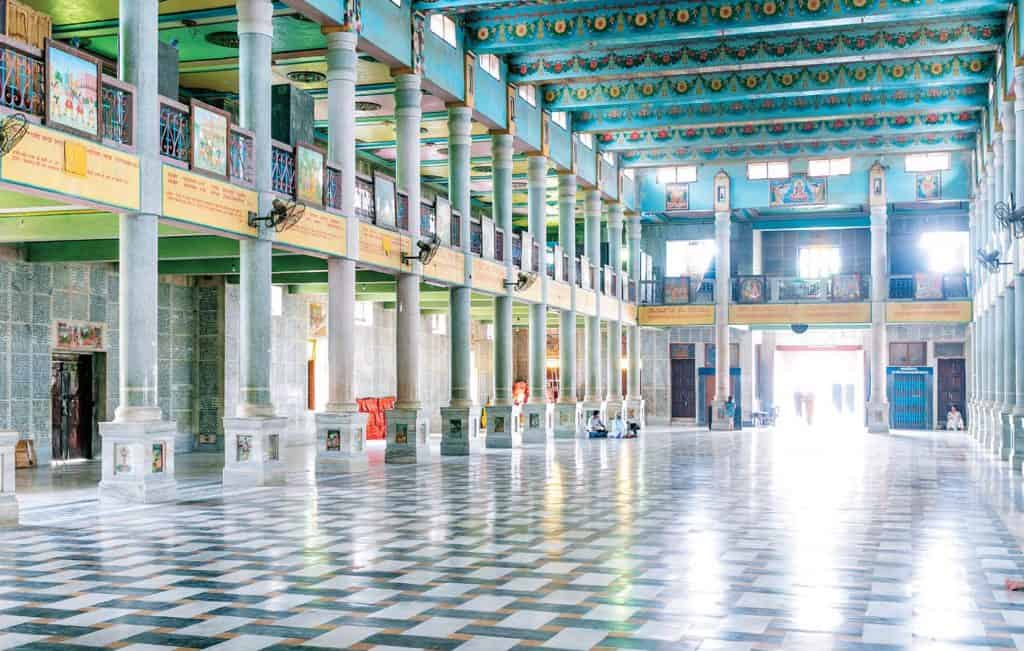
There are a total of 34 ancient caves here. Out of these, 12 are related to Buddhism, 17 to Hinduism, and 5 to Jainism. This large number of caves makes this area a significant and intricate example of remarkable architecture. And to make it even more beautiful, there’s the Kailasha Temple inside one of the caves, adding to the overall magnificence of this place.
Dasrath Bhavan:
Dasrath Bhavan is an important religious site in Ramkot and is a popular destination for visitors. It stands right in the heart of the city and is believed to have been built on the same spot where the original palace of King Dasaratha, Lord Ram’s father, once stood. It was in this very area that Lord Ram and his siblings spent their childhood and youth.
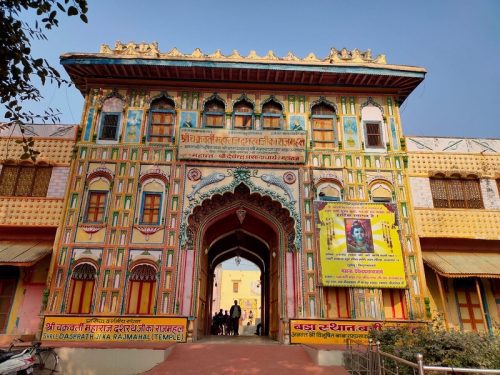
Inside Dasrath Bhavan, you’ll find a shrine with idols of Lord Ram, Lakshman, and Sita. To enter the temple, you’ll pass through a large and colourful entrance. The palace often echoes the melodious chants, songs, and dances performed by monks dressed in saffron robes. Although the Bhavan may not be as large as the original historical palace, it holds a special attraction during various festivals like Ram Vivah, Karthik Mela, Diwali, Ram Navami, and Shravan Mela. It’s a place filled with religious and cultural significance that draws people in during these celebrations.
Kale Ram Mandir:
The Kaale Ram Mandir, a lesser-known temple tucked away in the corners of Ram-ki-Pairi, can be found behind the Nageshwarnath Temple. It is believed that a single visit to this charming temple dedicated to the dark-skinned Lord Ram can grant one’s prayers. Despite its relative obscurity, the temple’s renowned evening aarti still attracts devoted worshippers. Nearby, you’ll also find its counterpart, the Gore Ram Mandir, which is dedicated to the fair-skinned Lord Ram.
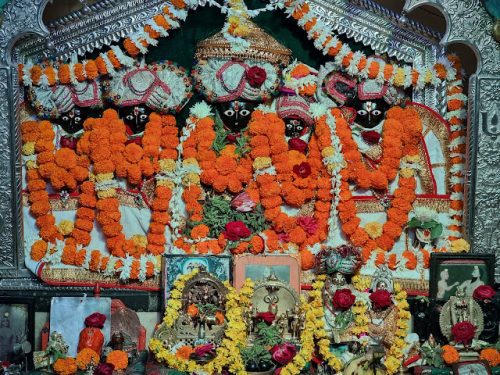
Brahmakund Gurudwara:
Situated a short distance east of Ram Janmabhoomi, you’ll find the historically significant Brahmakund Gurudwara. This location is believed to be where the Chimtadhari Saint Vaishnavadas extended an invitation to Guru Gobind Singhji and his Nihang warriors.
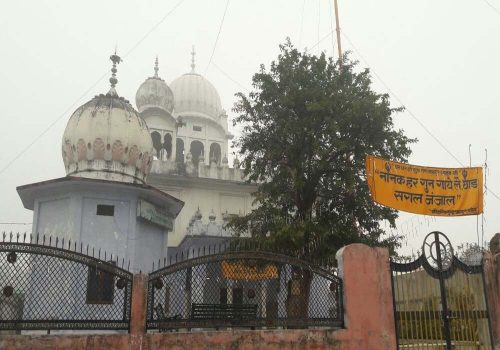
They gathered here to devise a military strategy to counter the advances of the Mughal emperor Aurangzeb. Remarkably, visitors can still view the weaponry used by the triumphant Nihang forces at this site. Additionally, historical records indicate that Guru Nanak Devji visited this gurudwara in 1557, and in 1725, Guru Tegh Bahadur visited and engaged in meditation for two consecutive days.
Mani Parbat:
A small hillock called Mani Parbat near Kami Ganj rises approximately 65 feet above sea level. This hillock not only offers a fantastic panoramic view of the city but also hosts a Buddhist monastery and a stupa built by Emperor Ashoka. At the hilltop of Mani Parbat, where numerous sacred sites can be found, it sits close to another elevated mound known as Sugriv Parbat.
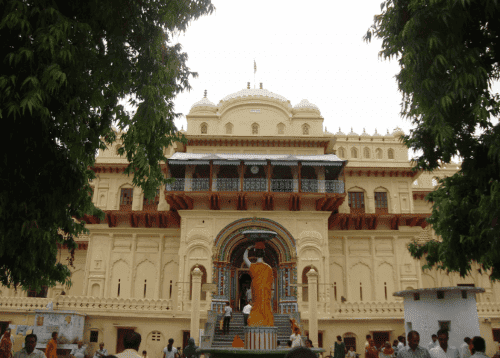
The Historical and Cultural Significance of the Sarayu River
The Sarayu River, flowing through the ancient city holds a place of immense significance in Hindu mythology and history, especially about Lord Rama. This river, identified as the Lower Ghaghara, is deeply intertwined with the legendary epic of the Ramayana. It is here, in the birthplace of Lord Rama, that the Sarayu witnessed pivotal moments, including Rama’s return after his exile and his eventual ascension to Vaikunth Lok (heaven) along with the inhabitants of the holy town, thereby transforming into deities.
Beyond its mythological importance, the Sarayu River is a vital element in the cultural fabric of the holy town. Bathing in its waters is considered a sacred ritual, believed to purify the soul and body. The river is also renowned for its medicinal properties, attributed with healing capabilities that draw people seeking both spiritual and physical rejuvenation.
In a bid to further celebrate and immortalize the river’s connection with the Ramayana, the township is developing the “Ramayana Spiritual Forest” along the banks of the Sarayu. This project is a part of the comprehensive Master Plan and is envisioned as an ecological forest that functions akin to an open-air museum. It aims to vividly portray the rich narrative tapestry of the Ramayana, focusing particularly on Lord Rama’s life and experiences during his period of exile (Vanvaas).
This initiative to establish a spiritual forest along the riverfront is not only a tribute to the Sarayu’s historical and religious significance but also a step towards creating an eco-friendly environment that resonates with the themes and tales of the Ramayana. The Sarayu River, along with Lord Rama, the Ramayana, and the holy city, forms an inseparable and revered part of Hinduism, with this proposed spiritual forest serving as a physical and spiritual extension of the river’s enduring legacy.
Food to accompany your spiritual visit:
This sacred city with deep historical and spiritual significance boasts a cuisine that is a delightful blend of traditional flavours and religious influences.
Predominantly vegetarian, the food is a testament to the city’s strong Hindu cultural roots, with many dishes prepared without onion and garlic, adhering to the principles of ‘satvik’ cooking. The cuisine is marked by the generous use of dairy products like milk, paneer (cottage cheese), and ghee (clarified butter), reflecting the pastoral traditions of the region.
Popular dishes include ‘kachori’, a deep-fried pastry filled with spicy lentils, and ‘chana masala’, a hearty preparation of chickpeas. he city’s cuisine also includes ‘Chana Masala’, a spicy chickpea curry, and ‘Poori’, deep-fried bread, commonly consumed during religious festivals. In keeping with the vegetarian traditions of the region, these dishes are often prepared without onion and garlic, adhering to the ‘satvik’ principles of Hindu cooking.
Sweets play a significant role in Ayodhya’s culinary landscape, with ‘peda’, a milk-based sweet, and ‘jalebi’, a deep-fried sweet in a coiled shape, being ubiquitous in local celebrations and festivities.
The food here, while simple, resonates with the devotion and spiritual ethos of Ayodhya, making it not just nourishment for the body but also for the soul.
Rabri:
Rabri, also referred to as rabdi, is a popular North Indian dessert renowned in this sacred township. It is crafted by simmering milk along with sugar, cardamom powder, and saffron until it thickens and reduces to one-third of its original volume. This creamy delight is often adorned with finely chopped or slivered dry fruits such as cashews and almonds. Some individuals choose to enhance its flavour further by adding a touch of saffron (Kesar).
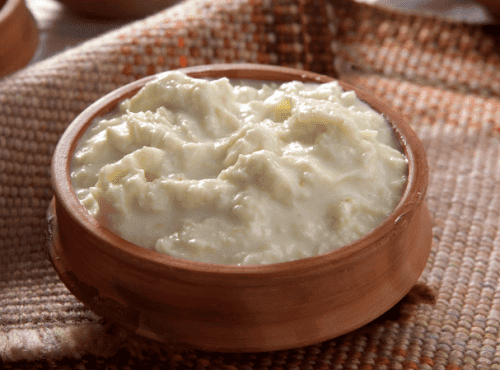
Ladoo:
Given the multitude of religious sites here, laddoos have become the city’s signature sweet. The ingredients can differ from one recipe to another, and the township presents a diverse range of these delectable delicacies. Laddoos hold a crucial role in all sacred and joyous festivities.

Chaat:
The township’s bustling streets are lined with vendors offering a vibrant assortment of chaats, generously drizzled with an array of savoury chutneys. This beloved snack is a delightful combination of tanginess and crispiness, making it a perennial favourite among the locals.
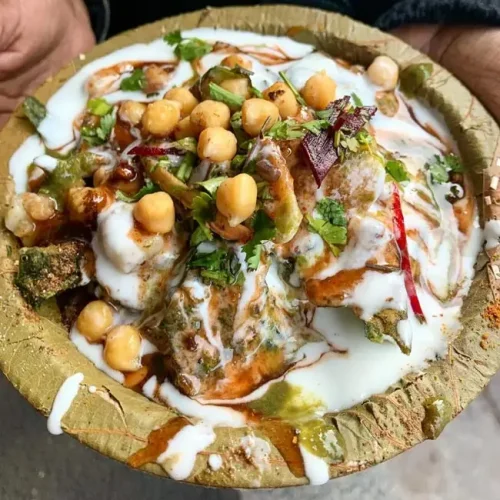
Chaat, rich in both colours and flavours, is a cherished street food. It comes in various delightful variations, including sweet and sour, as well as tangy and spicy options. You can savour chaat with accompaniments such as aloo tikki, paani puri, kachori, samosa, and papdi chaat.
A spiritual pilgrimage to this holy city
A spiritual pilgrimage to this holy city offers a profound journey into the heart of Hindu faith and mythology. As pilgrims traverse this ancient city, they encounter a landscape imbued with the divine presence of Lord Rama, echoing with tales from the Ramayana.
Each step whether along the serene banks of the Sarayu River, through the vibrant streets leading to majestic temples, or in the peaceful ambience of the upcoming Ramayana Spiritual Forest, is a step through a living tapestry of devotion, history, and cultural heritage.
Here, spirituality transcends mere observance, becoming an immersive experience that connects the soul to the divine and provides a deeper understanding of one’s faith.
A visit to this holy city more than a visit to a destination, is a passage to spiritual enlightenment, offering a unique blend of sacred mythology, historical depth, and serene natural beauty, making it a truly transformative pilgrimage for the devoted.
Read more: Latest



